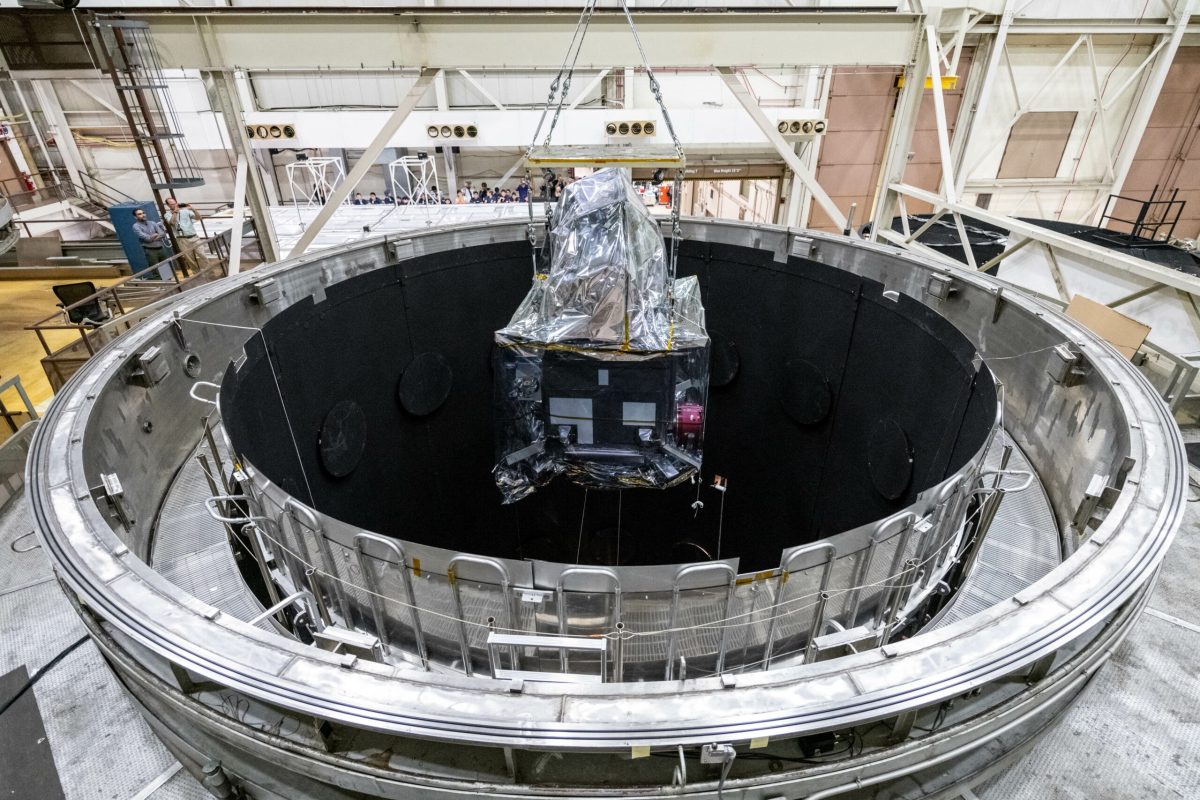Consider it the “mother of all tests.”
This summer, the PACE spacecraft (short for Plankton, Aerosol, Cloud, ocean Ecosystem) completed a critical phase of its launch journey: the thermal vacuum test (TVAC), where it was subjected to extreme temperatures and pressures in a specialized chamber at NASA’s Goddard Space Flight Center in Greenbelt, Maryland.
The objective? To verify the performance of the satellite once it’s launched and operational.
“This is the best way to simulate what PACE will experience in space,” said Craig Stevens, spacecraft systems lead. “Space is a vacuum, and the observatory is exposed to extreme temperatures. We must make sure PACE is ready for that environment.”
After months of round-the-clock shifts, numerous protocols, and a lot of team synergy, the mission completed its environmental testing in August, making it one step closer to launching in early January 2024.
“This proves the PACE observatory can withstand the rigorous thermal environment once it is launched and inserted into its operational environment,” said Mark Voyton, the mission project manager. “Completing the TVAC test is extremely significant, as it represents the last environmental test in our six-month environmental test campaign.”

Getting to this final test was a challenge for team members given the time and resources TVAC can take.
Before things could begin, the satellite was placed in the thermal chamber for a week earlier in June at NASA Goddard for setup.
Before the door for testing was closed, each team that had worked on PACE verified their part of the observatory was in working order, said Daniel Powers, PACE’s thermal product development lead. Members of the control room were also standing by to ensure that when the power for thermal testing went on, things worked properly.
Once the chamber door closed, official testing lasted about 33 days.

“This is the final verification that everything is working on the spacecraft as expected. We take it to temperature extremes as well,” said Powers. “By taking it to the expected extreme environments we will see on orbit, we can see that we have everything setup and designed properly from a thermal perspective.”
The team worked three shifts – covering 24 hours each day, every day – to ensure operations ran on a strict timetable.
“You have a full marching army, and it’s all hands-on deck,” Powers said.

PACE now has two more tests at ambient temperature and pressure, which complete the observatory’s post-environmental testing. Then the team begins preparing for the spacecraft’s journey to Florida and its launchpad.
Header image caption: The PACE observatory enters a thermal vacuum chamber at NASA’s Goddard Space Flight Center in Greenbelt, Md. It stayed in the chamber for 33 days of testing. Image Credit: NASA’s Goddard Space Flight Center/Denny Henry
By Sara Blumberg, NASA Oceans Communications Lead at NASA’s Goddard Space Flight Center

